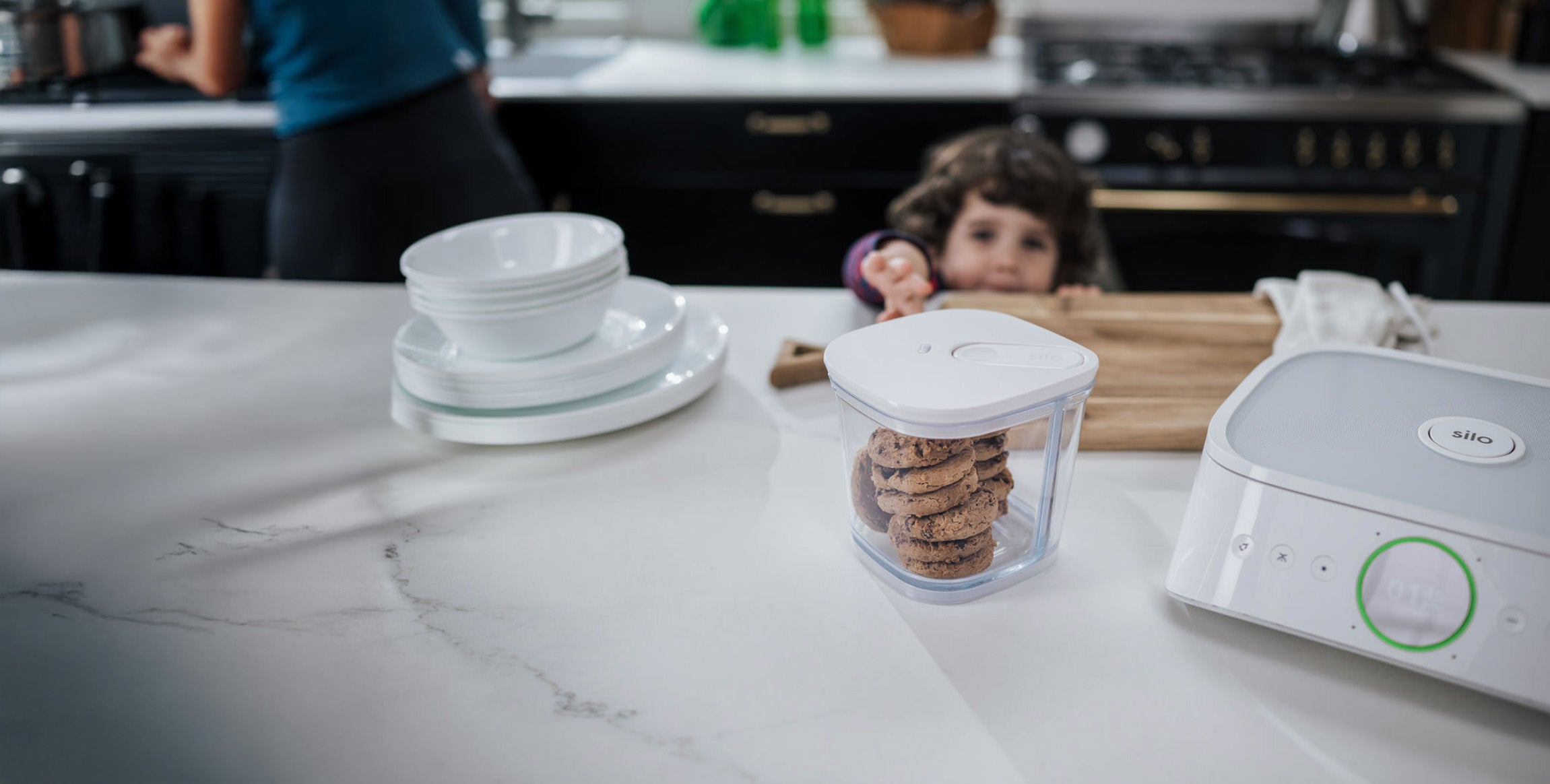How Long Can You Keep It?
A Fresh Guide to Food Spoilage and Senses
We’ve all done it. Stood in front of the fridge, holding a container of mystery leftovers or spotting a wilting bag of greens, asking the eternal question: “Is this still okay to eat?”
That question shows up daily in kitchens around the world. And it’s more than just a matter of taste. Improper storage and premature spoilage lead to an estimated 30 to 40 percent of all food in the U.S. going uneaten, much of it tossed not because it’s unsafe, but because we just weren’t sure. (FDA)
The good news is, freshness doesn’t have to be a guessing game. With a little knowledge and a few simple tools, anyone can get better at reading their food, storing it well, and cutting way down on unnecessary waste. This post is your starting point. We’ll walk through the natural causes of spoilage and the sensory cues you can trust to tell what’s fresh, what’s fine, and what’s best to let go.
Let’s start with the “why.”
Why Food Goes Bad
Fresh food, like all living things, is always changing. Once it’s harvested or cooked, it starts to break down. That’s natural. But certain environmental factors speed the process along. Understanding what’s working against your groceries can help you slow it down.
Air (Oxygen)
Oxygen is essential for life. It also feeds spoilage. Many of the bacteria and molds that break down food thrive in air-rich environments. Exposure to oxygen causes oxidation, which is what turns your apple slices brown and makes fats go rancid. Sealing food tightly, or removing air altogether, significantly slows this process. Some studies show that reducing oxygen exposure can cut bacterial activity by up to 99 percent. (USDA)
Moisture
Water helps food feel fresh, until it doesn’t. Microbes love moisture. Soft, damp environments are where bacteria and mold grow best. Bread in a humid kitchen will mold faster. Washed berries can turn fuzzy in a day. On the other hand, some foods like leafy greens wilt without the right amount of humidity. The key is balance. Use paper towels to absorb excess moisture in produce drawers, and avoid washing produce until you’re ready to use it.
Temperature
Most bacteria grow fastest between 40°F and 140°F. That’s what food safety experts call the "danger zone." Leftovers left on the counter can enter that zone within hours. This is why refrigeration matters so much. Your fridge should stay at or below 40°F (4°C), and your freezer at 0°F (–18°C). Cool your food quickly and refrigerate promptly to give it the longest safe life. (FDA)
Ethylene Gas
This one surprises people. Fruits like apples, bananas, and peaches give off a natural plant hormone called ethylene as they ripen. That gas can cause nearby foods, especially vegetables and delicate fruits, to ripen and spoil faster. You’ve seen it before. One overripe banana can take down the whole bowl. Store high-ethylene foods separately from ethylene-sensitive ones like leafy greens and berries. (Fruits & Veggies)
These four forces — air, moisture, temperature, and ethylene — are constantly at work in your fridge and pantry. The more you can control them, the better your odds of keeping things fresh.
Trust Your Senses
Expiration dates can be confusing. But your body is wired with its own built-in food safety sensors. Sight, smell, touch, and sometimes taste are powerful tools in deciding whether something is still good to eat.
Sight
Look for visible mold, discoloration, or textural changes. Greens that have turned slimy or gray are no longer safe to use. A fuzzy spot on a berry means it is time to remove that berry and check the rest. Liquids that have gone cloudy, or jars with bulging lids, should be discarded.
Smell
Your nose is one of your best defenses against spoiled food. A bad odor almost always means a food has gone off. Milk will sour. Meat and seafood will develop a funky, metallic or sulfur smell. Even a lack of smell can be suspicious. For example, if deli meat suddenly smells like nothing at all, it could be breaking down. (Penn State Extension)
Touch
Is it slimy when it shouldn’t be? That film is a byproduct of bacteria. It’s often found on decaying greens, meats, and raw poultry. Produce that’s become mushy or leaks when handled is past its prime. Eggs that feel sticky or have cracked shells should be tossed. Texture changes are often the first physical signs of spoilage.
Taste
Taste should be your final resort, never your first. Don’t take a bite to see if something’s safe. But if you do take a nibble of leftovers that smell and look fine but taste a little off, trust that. Spoiled food will often taste sour, metallic, or simply wrong.
Experience will make your instincts sharper. You’ll start to notice patterns. That hummus that always goes off after eight days. The spring mix that wilts on day three unless you store it just right. These quiet observations become your most reliable food safety system.
Why This Matters
Wasting food isn’t just inconvenient. It’s expensive. It’s frustrating. And most of the time, it’s avoidable.
When you understand what makes food spoil and how to recognize it, you take control of your kitchen again. You can shop with more confidence, store with more purpose, and throw away less of what you bring home.
Of course, even the best instincts are helped by good tools. Technologies like vacuum sealing make a real difference by helping slow the spoilage process at the source. Removing oxygen, sealing in freshness, and reducing the chance of mold or bacteria growth gives your food a longer, safer life.
For now, trust your senses. Learn their language. And know that when you pause in front of the fridge wondering, “How long can I keep this?” you already have most of the answers.
Sources used in this article:



